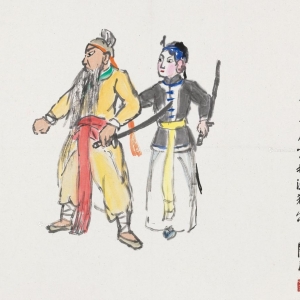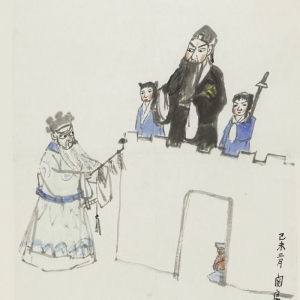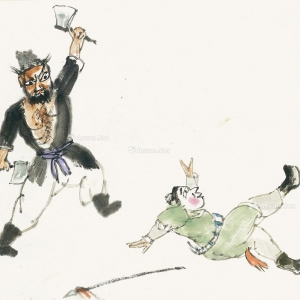国内

Introduction
九天花雨——柯桐枝花鸟画作品展
柯桐枝先生长期以来对中国画艺术的时代创新这一方向充满热情和理想。他的作品开门见山,在浓墨重彩中洋溢出蓬勃的生机,这种生机既发自他所描绘的花鸟形象特别是丰富茂盛的花木生命,也发自他塑造形象、创造意境的笔痕墨迹,花鸟的形象和笔墨的语言在他的作品中有机交融,浑然一体,形成强烈的视觉交响,让人看到一位艺术家钟爱艺术的情怀和在作品中投注的探索精神。
在某种程度上,一位画家所处的地域文化自然而然地会给予独特的熏染和蒙养。柯桐枝先生出身于福建莆田,闽海文化中勇于探索的传统养成了他热情奔放、执着追求的性格,在绘画的语言上形成了工写结合、墨彩兼备、注重造型与笔墨表现有机统一的基调。他后来长期在湖南生活与工作,在文化学养和美学旨趣上又受到湘楚文化的感染,重生活、重自然、重生命的文化意识得到进一步强化,他的艺术,正是地域性、时代性和个性有机统一的结晶。有了鲜明的文化意识和时代意识,作品的意境就绽放出新的华采。
柯桐枝先生这些年来足踏湘楚厚土,并不断到南方各地深入生活,在创作上愈发明确地建构“热带雨林艺术”的目标,这是他人到晚年艺术上的升华。有了这种意识,他的画面显得更加充实,多种花卉树木形象交织成生命的锦绣,给人无边无际、无限漫延的感受。在一些作品中,树木密织,花繁叶盛,视域超越视线,形象直逼眼帘,让人感到走进热带雨林的世界,吮吸到来自泥土和花木的芬香。他的艺术,反映了今日中国社会发展中越来越急切需要倡导、也越来越具备整个社会共识的生态意识、环境意识和家园意识,也为中国当代花鸟画的发展作出了积极的贡献。
中央美术学院院长、中国美术家协会副主席 范迪安
展览时间:2018年7月17日-7月31日
主办单位:中国艺术研究院艺术创作院、中国美术家协会艺术委员会、中国画学会、湖南省文史馆、湖南省文联、湖南省美术家协会、湖南省博物馆、中共长沙市委宣传部、长沙市文联
承办单位:湖南省花鸟画家协会、湖南省湘江书画院
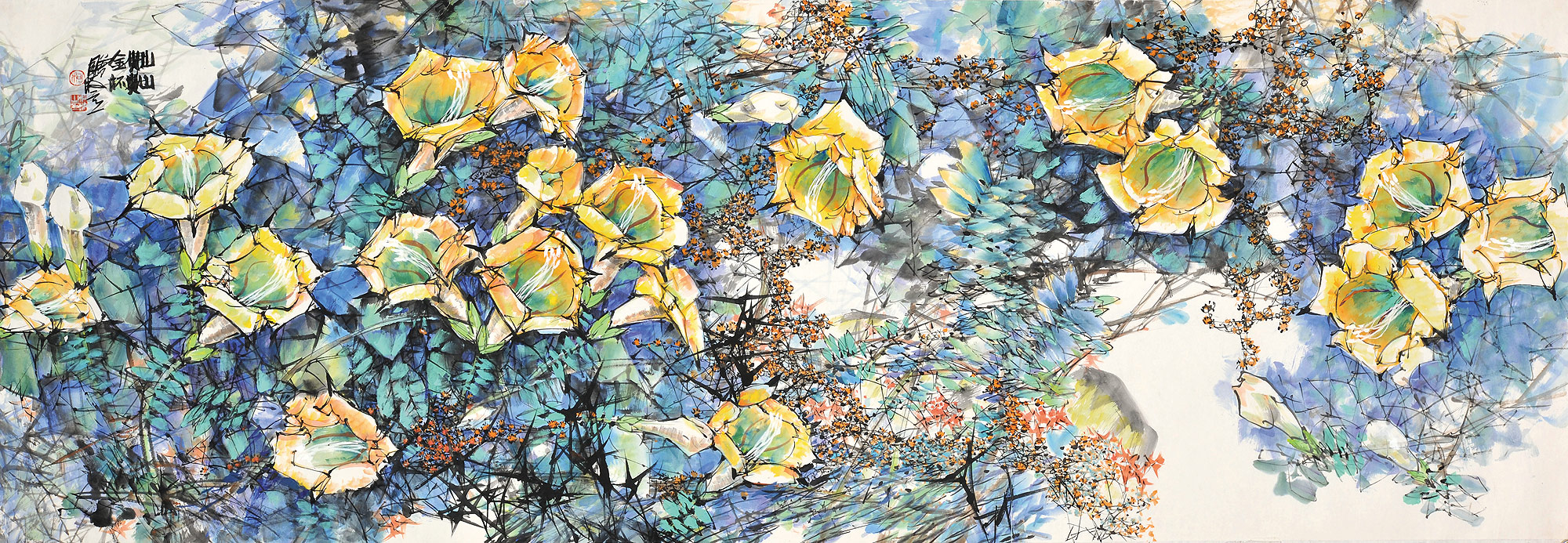
Highlights
- 春洒雨林-178X96CM-2000年
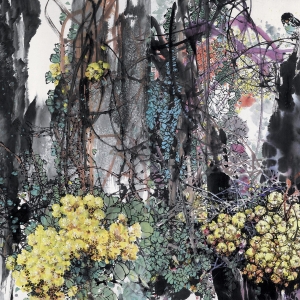
- 春风吹绽满树花-68X136CM-2016年
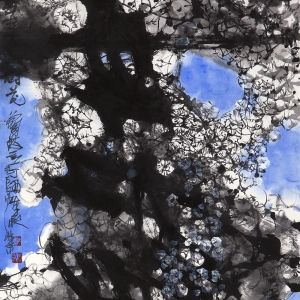
- 春动雨林万千媚-185X144CM-2014年
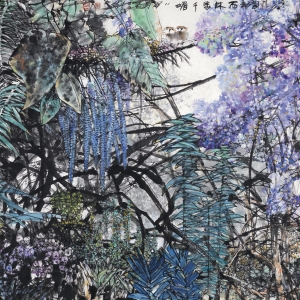
- 春催花艳-246X160CM-2014年

- 初秋-68X136CM-2016年

- 勃发生机-68X68CM-2014年
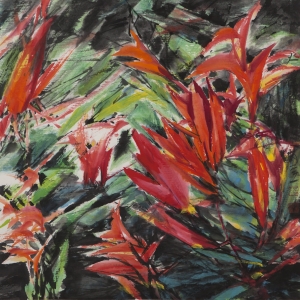
- 版纳风采-125X144CM-2008年
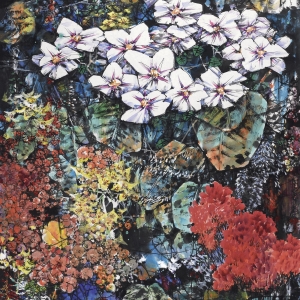
- 版纳春光-360X145CM-2016年
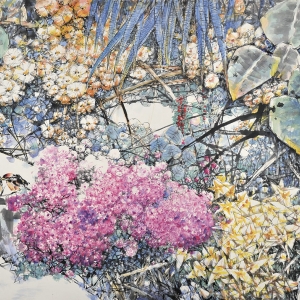
- 春潮
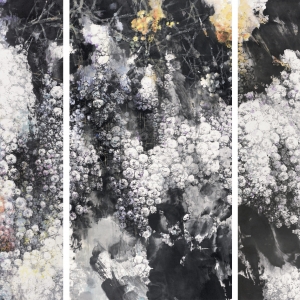
- 淡雅泽润夜来香-68X136CM-2015年

- 点点-124X161CM-2011年
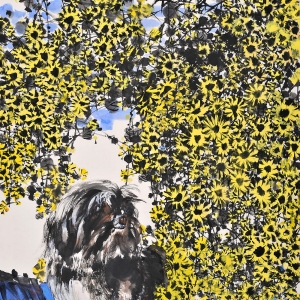
- 娥眉报春-180X97CM-2015年See More
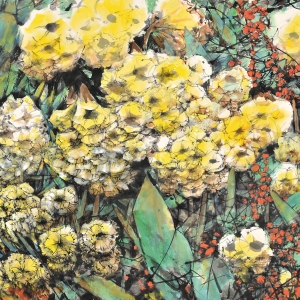
Artist introduction
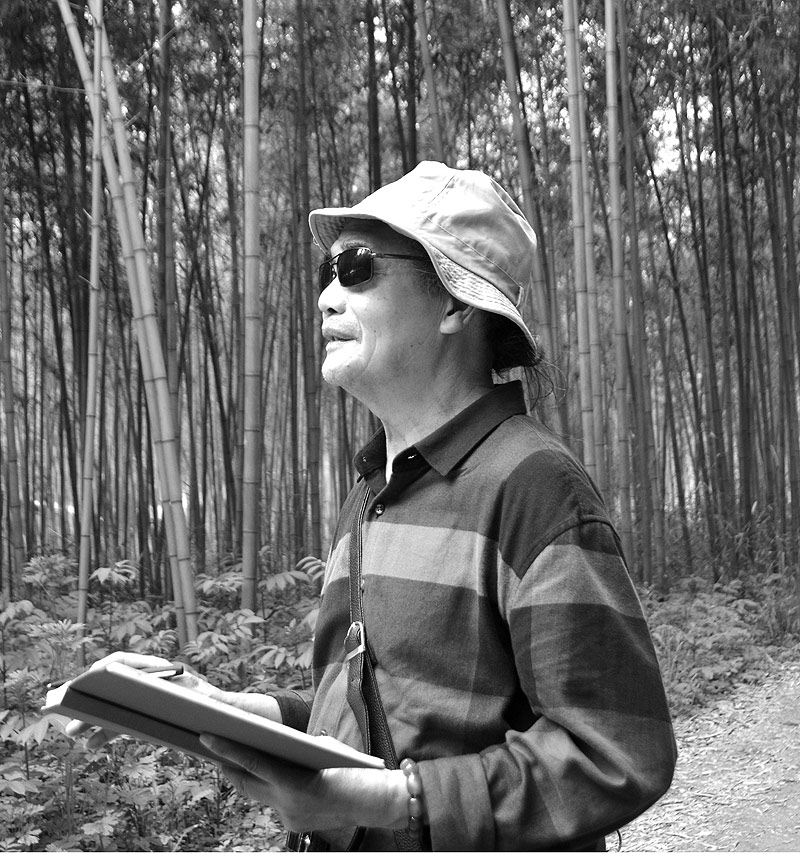
柯桐枝,1943年出生于福建莆田,1965年毕业于福建师院艺术系,师从岭南画派名家宋省予、陈子奋先生。分配西安工作16年,期间向版画大家修军先生学习版画创作。1981年举家调到湖南。曾任长沙市文联第六、七届副主席、党组成员,长沙市美协第六、七届主席,湖南省花鸟画家协会第一、二届主席,湖南省美协中国画艺委会副主任,历任省美协理事。
现为中国艺术研究院艺术创作院研究员,中央文史馆书画院研究员,中国美术家协会会员,中国版画家协会会员,中国人民解放军国防大学书画院副院长,湖南省花鸟画家协会名誉主席,中国热带雨林艺术研究院常务理事,湖南省文史馆研究馆员,湖南省中国画学会顾问。
2014年6月26日—7月9日在中国美术馆举办画展,展出作品45幅;
2014年12月28日—2015年元月20日在厦门美术馆举办画展,展出作品56幅;
2016年5月26日—6月10日在国防大学举办画展,展出作品42幅;
2017年3月8日—17日在中共中央党校举办画展,展出作品61幅;
2007年7月在湖南省博物馆举办画展,展出作品110幅;
2011年10月在福州画院举办画展,展出作品48幅;
2011年6月被中国热带雨林艺术研究院聘为常务理事(颁发证书);
2015年1月被中国艺术研究院聘为艺术创作院研究员(颁发证书);
2016年5月26日被中国人民解放军国防大学书画院聘为副院长(颁发证书);
2016年10月被中央文史馆书画院聘为研究员(颁发证书)。
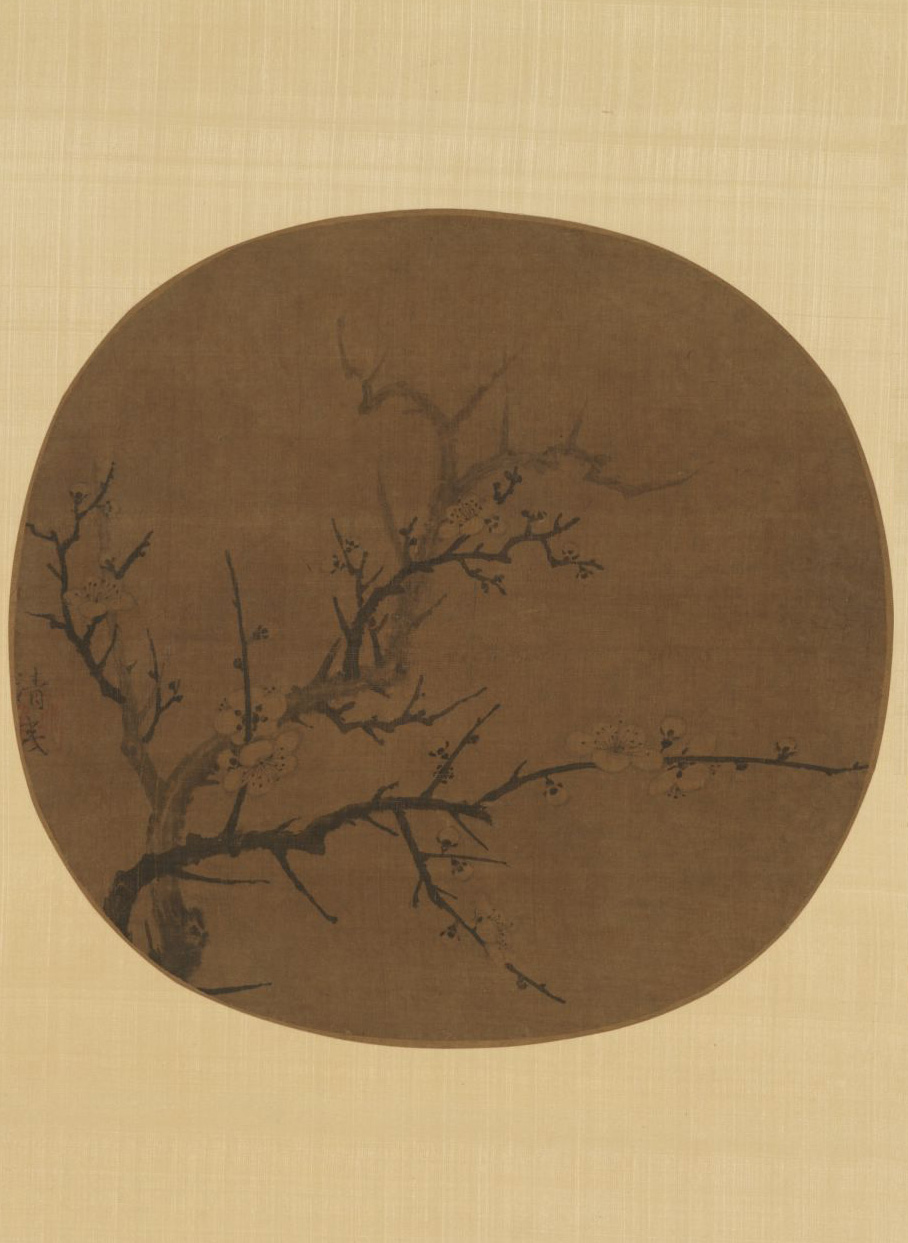
Introduction
丹青艺事越千年──天津博物馆藏宋元明清绘画精品展
“丹青艺事越千年──天津博物馆藏宋元明清绘画精品展”由湖南省博物馆与天津博物馆联合举办,展出时间为2010年8月12日——11月12日,展览地点位于湖南省博物馆陈列大楼二楼书画厅。
中国古代绘画作品是天津博物馆馆藏的重要组成部分,其数量之可观、品质之精良在全国博物馆界都享有盛誉,藏品中不乏宋元的稀世名作以及明清各个画派名家的代表作品。此次“丹青艺事越千年──天津博物馆藏宋元明清绘画精品展”,是从天津博物馆数万件绘画藏品中遴选出46件菁华进行展出。展览将按照画作的创作年代,分为“尚意抒情——宋元绘画”、“儒雅蕴藉——明代绘画”、“笔情墨趣——清代绘画”三大部分。
展出的数十件画作,其创作者都是画史上不可或缺的节点人物,作品也无一不是其代表性的经典佳构;内容上则兼顾了山水、花鸟、人物各个画科,足以串写一部简约但完整的中国古代绘画史。此次展览中宋元绘画虽然数量不多,却不乏绘画史上的名家名作,如有宋代李唐的《濠濮图》、苏汉臣的《婴戏图》、扬无咎的《梅花图》、元代李衎的《双钩竹图》、吴镇的《多福图》等,均是中国绘画史上的不朽之作。明清部分,则基本囊括了这一时期绝大部分画派及其代表画家,如明代“宫廷绘画”、“明四家”、“松江画派”,清代的“四王四僧”、“金陵画派”、“扬州画派”等画派,其主要画家的作品均在此列。
届时观众可在博物馆门口领取参观券免费欣赏这个展览。欢迎大家在金秋时节来到湖南省博物馆书画展厅,品味古书画中传来的幽幽墨香。

Highlights
- 宋 苏汉臣 婴戏图
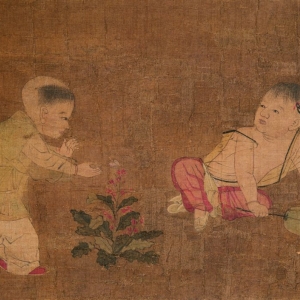
- 宋 无款 金明池争标图页
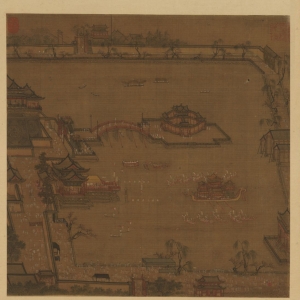
- 宋 无款 高阁凌空图页
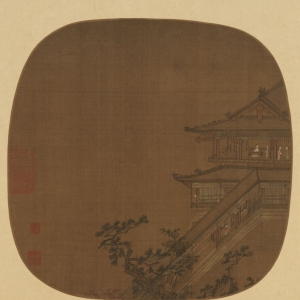
- 宋 无款 花石草虫图页
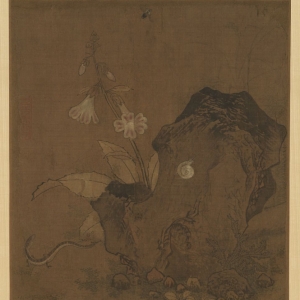
- 元 李衎 双钩竹图轴
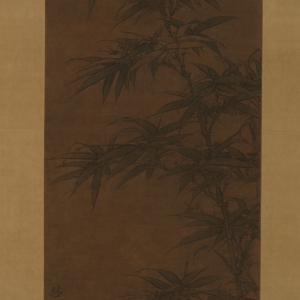
- 元 吴镇 多福图轴
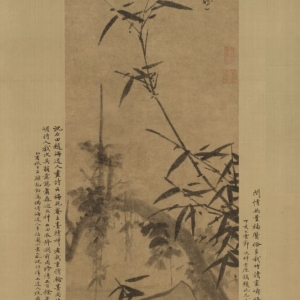
- 元 马婉 青山红杏图 页
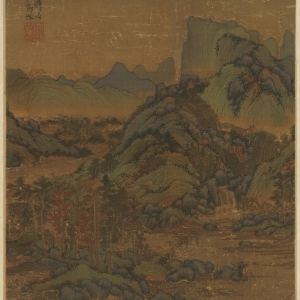
- 元 陈选 岩阿琪树图轴
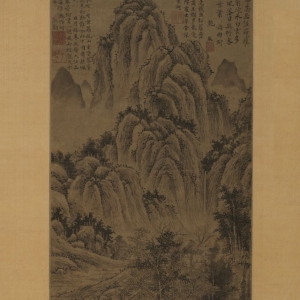
- 元 无款 锁谏图轴
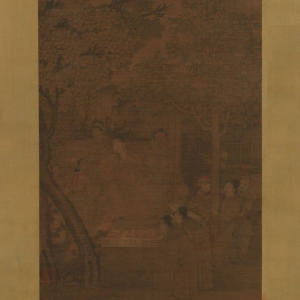
- 元 无款 山阴避暑图轴

- 元 无款 千岩万壑图轴

- 明 王谦 冰魂冷蕊图轴See More
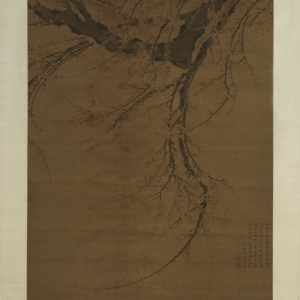
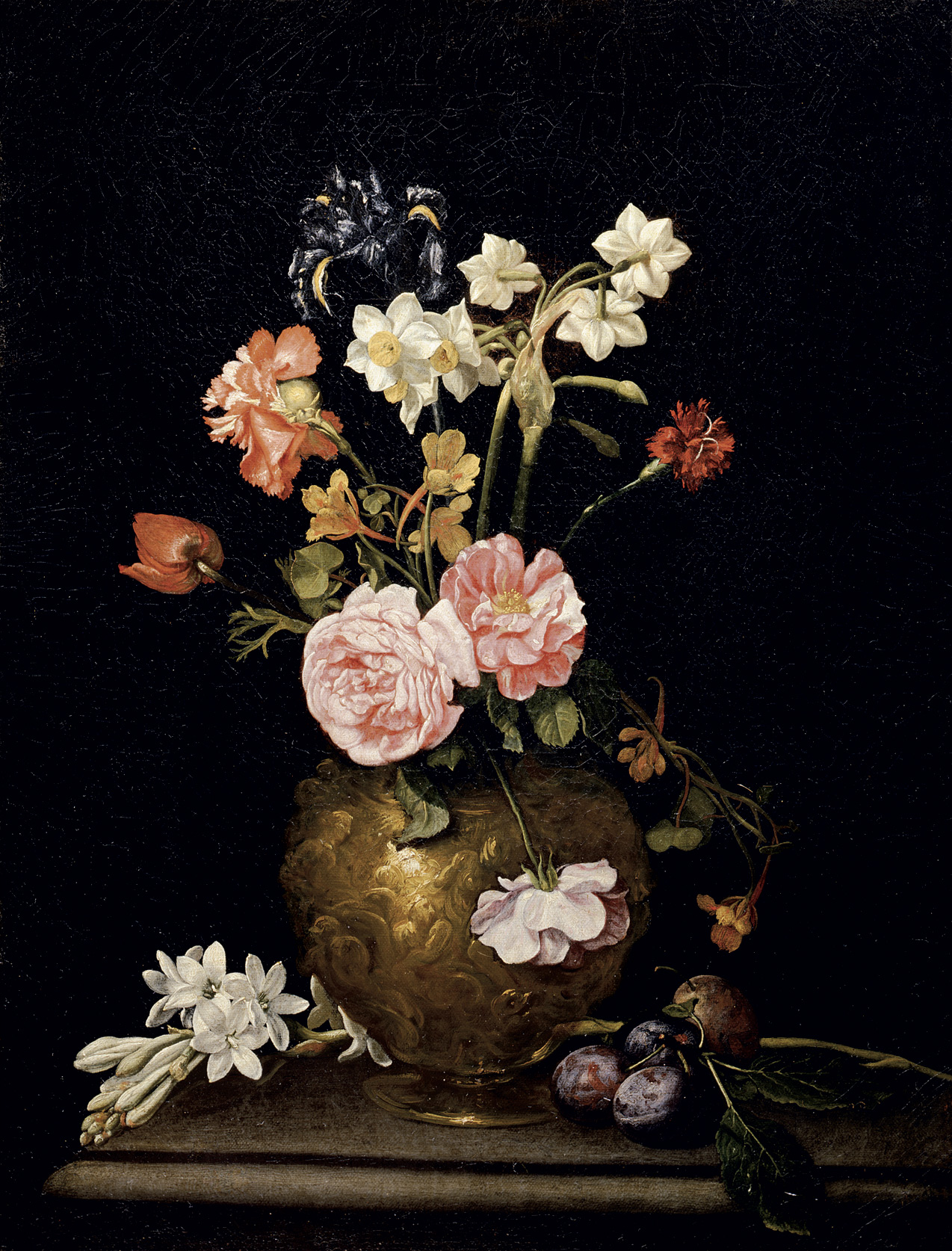
Introduction
意大利乌菲齐博物馆珍藏展:十五世纪-二十世纪
由意大利乌菲齐博物馆、湖南省博物馆主办的“意大利乌菲齐博物馆珍藏展:15世纪-20世纪”,于2010年11月30日至2011年2月27日向公众开放。本次展览是湖南省博物馆继“古典与唯美——西蒙基金会藏欧洲19世纪绘画精品展”之后举办的“世界艺术系列”中的重要的展览之一。作为中意两国文化交流的重要项目,此展旨在纪念中意建交40周年,传播和增进中国人民对意大利艺术及欧洲艺术的了解。展览集中展示了乌菲齐博物馆所藏从15世纪到20世纪之间风景、景物、肖像三种类型共82幅绘画珍品,以时代为序,比较完整地反映了乌菲齐博物馆的绘画收藏体系。展品数量之多在该馆借展历史上十分罕见,如此众多意大利艺术遗产获得批准来华展出实属不易,也是乌菲齐博物馆来中国举办的第一个规模性展览。观众可以从展览中欣赏到跨越五个多世纪的不同时期的艺术家们精湛的艺术创作。
展览精选的82件绘画珍品中,囊括了文艺复兴时期的大师之作、16至20世纪中叶意大利画家的重要作品、17世纪荷兰风景画家以及18、19世纪法国和德国艺术家的肖像与风景作品,体现了文艺复兴以来欧洲绘画艺术的流衍与走向。更有文艺复兴早期佛罗伦萨画派大师波提切利的《三博士来朝》、文艺复兴盛期威尼斯画派大师丁托列托的《莱达与天鹅》、提香的《维纳斯和丘比特、狗及鹌鹑》为展览的点睛之作。
位于意大利佛罗伦萨市的乌菲齐博物馆,是当今世界最重要的西方艺术收藏机构之一、世界四大藏馆之一。于1581年由佛罗伦萨的实际统治者——著名的梅迪奇家族所创建。在这个时期,佛罗伦萨成为人文主义和文艺复兴的中心。乌菲齐博物馆早在1743年便对外开放,是历史上第一家对外开放的博物馆,也是迄今为止全世界收藏文艺复兴时期名作最多的博物馆,以集萃文艺复兴时期的重要作品和权威代表性而在世界上享有盛誉,有“文艺复兴艺术宝库”之称。目前共有46个画廊,收藏有十余万件珍贵的艺术品,其丰富藏品全面地展现了从拜占庭风格、哥特艺术、文艺复兴早期、文艺复兴盛期、矫饰主义直至二十世纪的艺术发展的历程。因此,在这个展览中,观众不仅可以欣赏意大利十五至二十世纪的画作珍品,亦可领略意大利及欧洲悠久的人文传统。
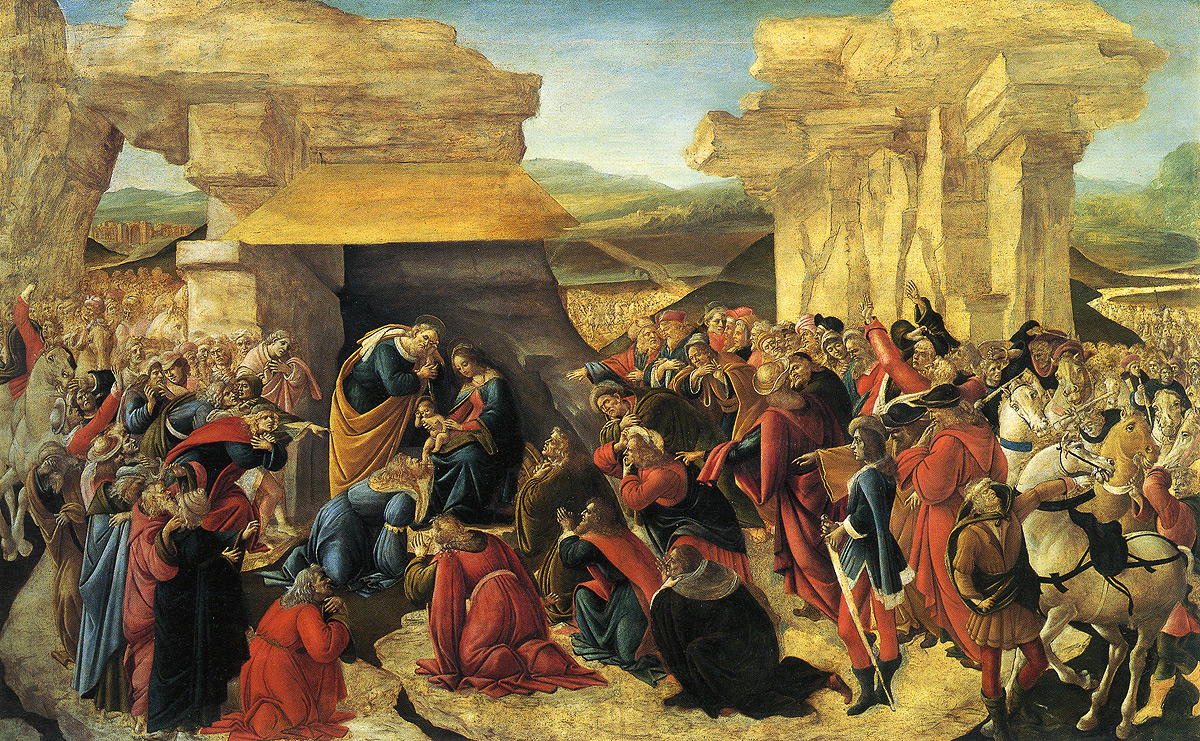
Highlights
- 莱达与天鹅
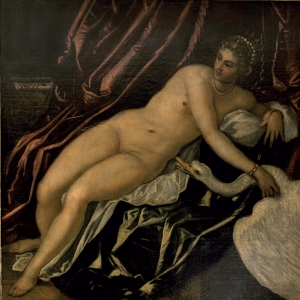
- 花瓶
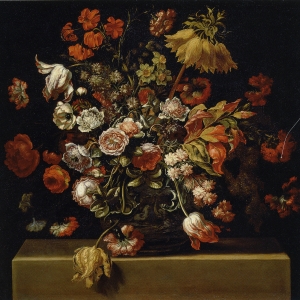
- 维纳斯与丘比特、狗和鹌鹑
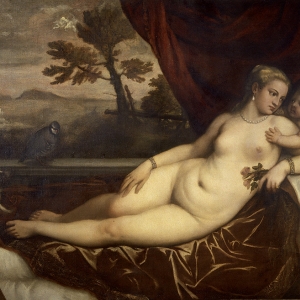
- 人物乡情

- 秋天,葡萄丰收酿酒忙

- 丘比特们的舞会

- 女子肖像

- 花瓶与水果

- 花瓶与石榴

- 法国王后玛丽亚.德

- 朝圣者打扮的女子肖像

- 三博士来朝See More
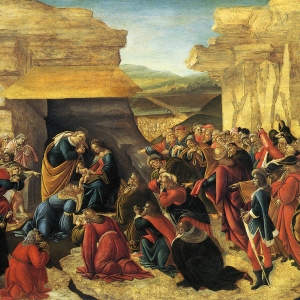
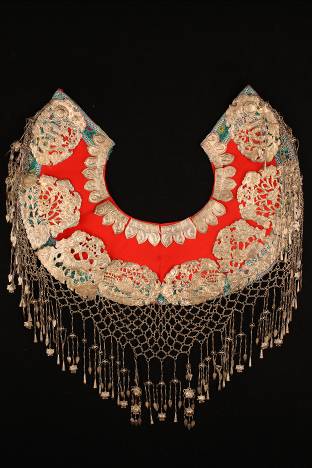
Introduction
银饰之美——湖南、广西、贵州三省(区)苗族银饰联展
贵州、湖南、广西三省(区)是中国苗族主要聚居区之一,也是苗族文化保存最完整的地方。在多彩的苗族文化中,苗族银饰以其数量巨大、品类繁多、造型奇特、玲珑雅致的特点,成为了苗族文化的主要象征之一。苗乡俗语云:“锦鸡美在羽毛,苗女美在银饰。”苗族银饰凝聚着苗家人的智慧,彰显着苗家人的历史、文化和审美情趣,堪称苗家人的骄傲与荣耀。
为了集中展示苗族银饰艺术,2010年,广西民族博物馆、湖南省博物馆和贵州民族文化宫,联合策划举办了“似雪银花——广西、贵州、湖南三省区苗族银饰展”,并在广西民族博物馆、贵州民族文化宫等地巡回展出。2011年3月29日,这一展览来到了湖南省博物馆,展览更名为“银饰之美——湖南、广西、贵州三省(区)苗族银饰联展”,分为头饰、项饰、手饰、佩饰、衣饰、工具六个单元,集中展示了湘、桂、黔三地400多件苗族银饰文物及其制作工艺。观众不仅可以通过这一展览了解苗族银饰的各个种类,也能够感知湘、桂、黔三地苗族银饰的相互关联与差异;不仅能够通过精美雅致的头花、披肩感觉到苗族人民对于美好生活的热爱与向往,亦可通过“蝴蝶妈妈”的纹饰、兵器银吊饰等体味苗族的图腾崇拜、迁徙文化等民族特性。作为苗人服饰的一部分,银饰也是“穿在身上的悠远史诗”。看苗族银饰展,我们读到的是苗人的历史。
本展览对公众免费开放,5月4日结束。
展览时间:2011年3月29日—2011年5月4日
主办单位:广西壮族自治区文化厅 贵州省民族事务委员会 湖南省文物局
承办单位:湖南省博物馆 广西民族博物馆 贵州民族文化宫
参观小贴士:
本展览免费对公众开放,请凭身份证领票参观
开放时间:9:00—17:00(16:15停止入馆,周一闭馆)
展出地点:湖南省博物馆新陈列大楼三楼
交通路线:112路、113路、131路、136路、146路、150路、302路、303路、901路公交车可直达
咨询电话:0731-84514630、84513123、84535566转8605/8836
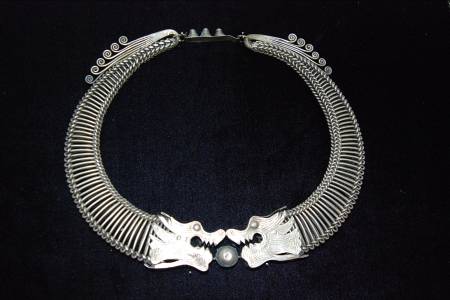
Highlights
- 银帽
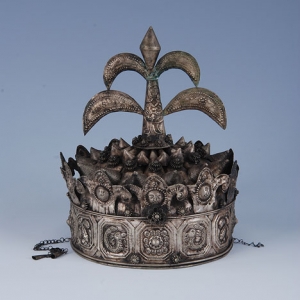
- 银凤冠

- 吊花银头簪
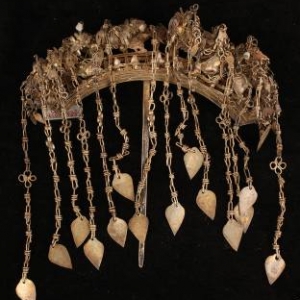
- 银胸饰

- 银披肩
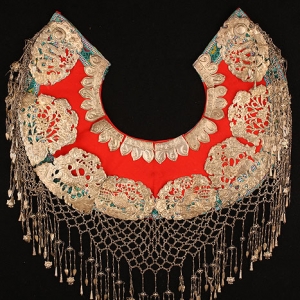
- 蝙蝠龙纹银吊挂

- 银角

- 施洞银耳柱(一对2件)

- 银马头花

- 银接龙帽

- 龙纹形银项圈
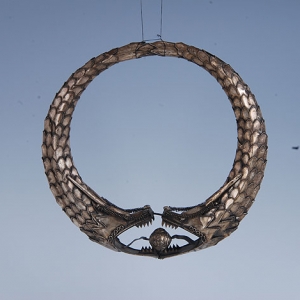
- 环形刻纹吊坠银项饰See More

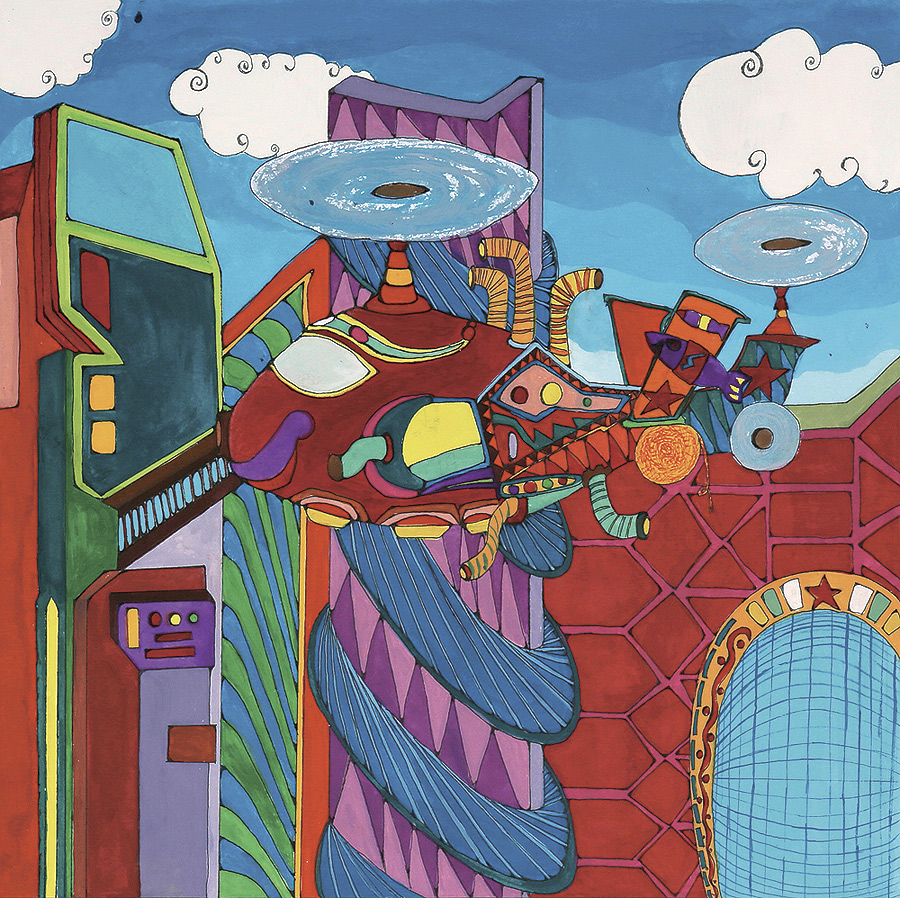
Introduction
“My Future My Will”: International Children’s Paintings Exhibition
After birth, children begin to explore and try to understand the world by placing the “self” at the foundation of perception. At first, they cannot draw the boundary between themselves and the world. Then gradually, they learn to observe and describe the world from the perspective of “me”. Even if they can’t express themselves in words clearly, they will draw things whenever they pick up pens. During their growth, they learn to draw objects by using signs and express their feelings with brushes. They represent the real “self” by painting in their own way as kids.
Children’s paintings are amazing. When talking about the primitive paintings created by primitive humans such as those vivid frescos and exquisite pottery paintings, people can’t help making a reference to children’s paintings. It is also impossible not to mention the influence of children’s paintings to the modern paintings created in the prosperous period of civilization. These three types of paintings represent the world with abstract signs, portray objects in a plain artistic language and show the inner emotions with bright colors. Picasso once said, “It took me four years to paint like Raphael, but a lifetime to paint like a child.” This master of modern art understood the essence of painting: to “observe” like a child since a child would draw things directly from what he/she sees. Thus, children’s paintings are extremely natural.
Therefore, we stage this exhibition of children’s paintings with great awe. This exhibition, beginning with “me” and reappearing frequently throughout, demonstrates the spontaneous expression of many children as they use the brush to represent the world through their eyes.
This exhibition is dedicated to children who are the future of mankind and to every adult who is willing to understand children.
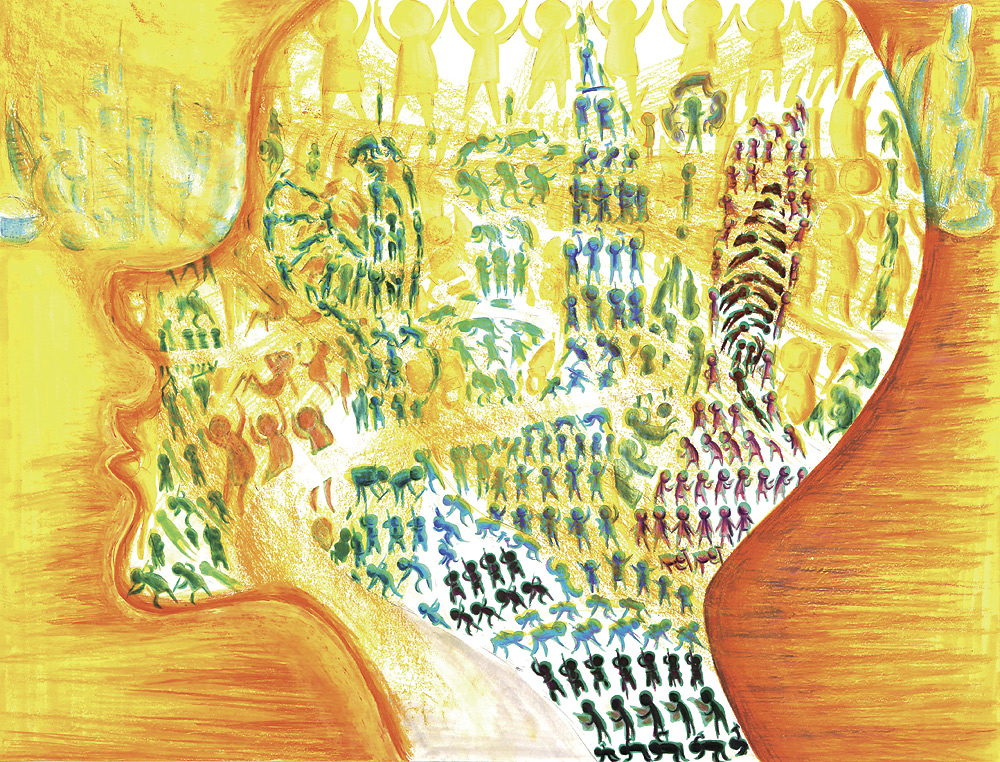
Highlights
- 《“未来之眼”心灵之眼》沈夕雅--少儿组--北京
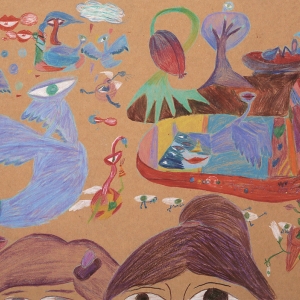
- 《未来我来》冯米若-少儿组--美国
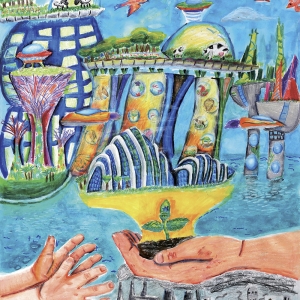
- 陈启泽-美国-幼儿组
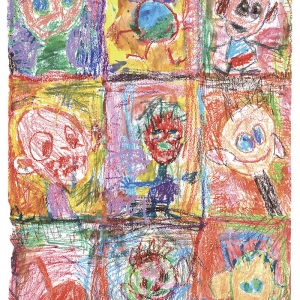
- 王卓雅-深圳-少儿组
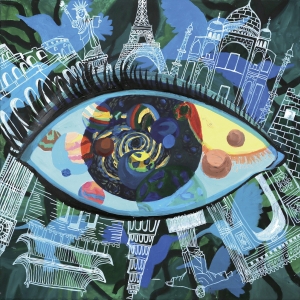
- 《猫咪的城市》-王晴-幼儿组-广东佛山
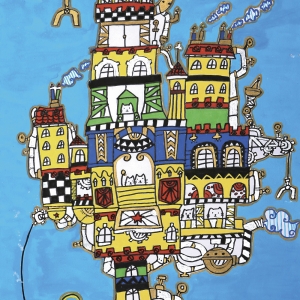
- 《天空之城》-简嘉惠辰-幼儿组-上海
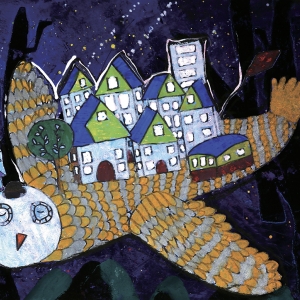
- 《未来建设家》-王家成-幼儿组-深圳
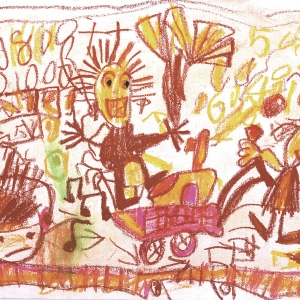
- 《下雨啦》-王炳众-少儿组-湖南长沙

- 李胤龙-广州-少年组
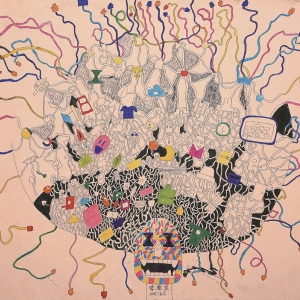
- 《围城》-邓楠-少年组-广东惠州
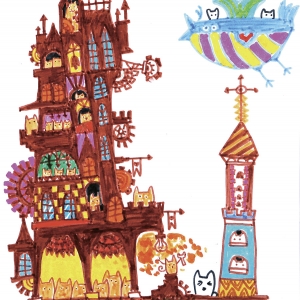
- 《未来的美丽世界》-陈岱徽-少儿组-广州
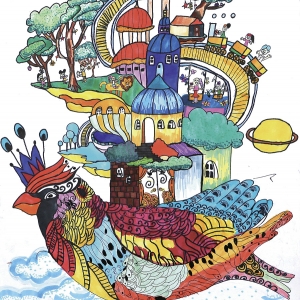
- 《未来我来》-罗奕彤-幼儿组-上海See More
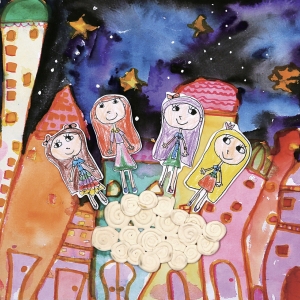

Introduction
「僕の未来、僕が決める」国際子供絵画特別展
子供は生まれる始めから、自己を中心として、世界を探求し、世界を認知する。初めに、自分と世界の違いがわからないげと、徐々に、「私」の視覚から世界を観察する、見直す、描く。言語を自由に表現できない彼らは、ペンを手にすると、あちこち落書きします。そのあと、彼らは記号を使って物を表現し、ペンを使って感じだことと自分の喜怒哀楽を描きます。子供たちは真の自分が絵を通して表現します。
子供達の絵は本当に素晴らしいものです。人類の児童時代作った絵と言えば、生き生き岩壁の絵と美しい陶器上の絵よく児童画を参考物として話に出てきます。文明時代にはいり、現代の美術を話に出て来るとしても、児童画の影響がわすれわけではいきません。三者とも記号を世界を表現し、芸術的な言語を物ことを描き、情熱的な色が気持ちを表現します。ぺカソはこのように言っていました「10代のとき私の絵を描く様子は古代大師のようになっていました。でもわたしは生涯にかけて子供のように絵を描くこどが学んでいます。」ぺカソは絵を描く真実を理解してます。子供のような目で観察し、子供の目に何にを見れば、何にを描く。だからこそ、子供達の作品は自然に、情熱的です。
私たちは敬意を持って今回の子供絵画特別展示会を企画しました。私たちの展示が「私」を始め、どこでも「私」の存在を感じます。それは、たくさん幼い心が世界をふれあい、手がペンを取るときの本音です。
この特別展は人類の未来に当たる子供達と子供たちを読み解きたい大人たちに捧ぎます。

Highlights
- 《“未来之眼”心灵之眼》沈夕雅--少儿组--北京

- 《未来我来》冯米若-少儿组--美国

- 陈启泽-美国-幼儿组

- 王卓雅-深圳-少儿组

- 《猫咪的城市》-王晴-幼儿组-广东佛山

- 《天空之城》-简嘉惠辰-幼儿组-上海

- 《未来建设家》-王家成-幼儿组-深圳

- 《下雨啦》-王炳众-少儿组-湖南长沙

- 李胤龙-广州-少年组

- 《围城》-邓楠-少年组-广东惠州

- 《未来的美丽世界》-陈岱徽-少儿组-广州

- 《未来我来》-罗奕彤-幼儿组-上海See More

Visiting guide
特別展時間:2018年5月26日―6月30日
場所:湖南省博物館特別展示庁第二ホール

Introduction
“未来-我来”国际少儿绘画展
儿童自出生伊始,便开始以“自我”为中心,探索世界,认知世界。刚开始,他们分不清自我与世界的边界。渐渐地,才学会用“我”的视角来观察世界、审视世界、描绘世界。即使他们还无法用语言自如地表达,只要他们拿起笔来,便会肆意涂鸦。这之后,他们学会用符号来描画物体,用画笔来表达所知所感,表达喜怒哀乐。他们将自己最本真的一面,用稚拙的笔触呈现出来。
儿童绘画真的很了不起。每当人们谈起人类童年时期所创作的原始绘画,那些灵动的岩壁画,那些精美的陶器绘画,总免不了用儿童画作为参照。即使是进入繁盛文明时期所开创的现代绘画,也总要提及儿童画对它的影响。三者同为用抽象符号表征世界,用平面化的艺术语言表现物象,用肆意热烈的色彩表达内在的情绪。毕加索曾言:“我在十几岁时画画就像个古代大师,但我花了一辈子学习怎样像孩子那样画画。”这位现代艺术大师理解到了画作的真谛:用孩子般的眼睛去“观看“,孩子眼里看到什么,就是画什么,他们想当然的去“乱画”,孩子们的作品都是那般自然自在、浑然天成。
因此,我们怀着深深敬意策划了此次儿童绘画展览。我们的展览从“我”开始,且随处可见“我”的存在,它包含了许许多多幼小心灵在碰触世界、手执画笔时的本真表达。
谨以此展览献给预示着人类未来的儿童,以及每一位期待读懂儿童的成人。

Highlights
- 《“未来之眼”心灵之眼》沈夕雅--少儿组--北京

- 《未来我来》冯米若-少儿组--美国

- 陈启泽-美国-幼儿组

- 王卓雅-深圳-少儿组

- 《猫咪的城市》-王晴-幼儿组-广东佛山

- 《天空之城》-简嘉惠辰-幼儿组-上海

- 《未来建设家》-王家成-幼儿组-深圳

- 《下雨啦》-王炳众-少儿组-湖南长沙

- 李胤龙-广州-少年组

- 《围城》-邓楠-少年组-广东惠州

- 《未来的美丽世界》-陈岱徽-少儿组-广州

- 《未来我来》-罗奕彤-幼儿组-上海See More

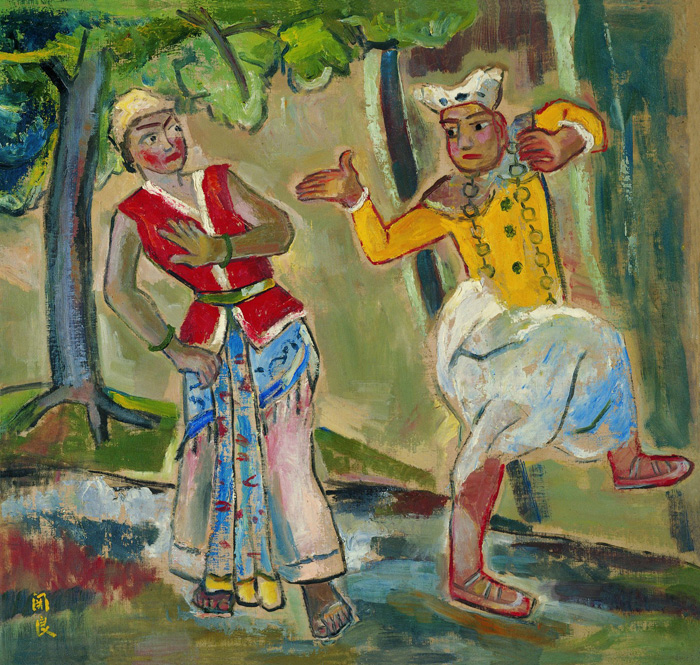
Introduction
Paintings by Guan Liang-Exhibition Commemorating Guan Liang’s 115th Anniversary of his Birth
Exhibition Commemorating Guan Liang’s 115th Anniversary of his BirthGuan Liang, impressing people with his exquisite, childlike innocent and ingenuous Chinese opera figures paintings, is famous for his unique style. The exhibition presents some of his typical works featuring Chinese characteristics, such as The Monkey King Subdues the Skeleton Demon (A classic story from Journey to the West), The Drunken Beauty (A concubine in the Tang dynasty who was drunken) and A series of Peking Opera Figures, which has drawed wide public attention.
As one of the most adventurous and innovative Chinese artists in 20th century, Guan Liang has made remarkable contributions to the development and demonstration of Chinese traditional paintings. Perfectly combining Chinese and Western painting techniques, he integrated the painting techniques of modern and contemporary artists including Matisse, Van Gogh and Gauguin, with thick and light shades of ink, uncomplicated lines and singular Chinese aesthetics, shaping distinctive style in his paintings.
Featuring concise, unsophisticated and appealing stokes, his vivid and lifelike works were created in way of exaggeration and deformation, unrestrained to the dissection, perspective and proportion of the subject. Those characters in his works appeared to be innocent and interesting, highlighted by the depiction of eyes which are lively conveyed by dotting thick ink as the pupils.
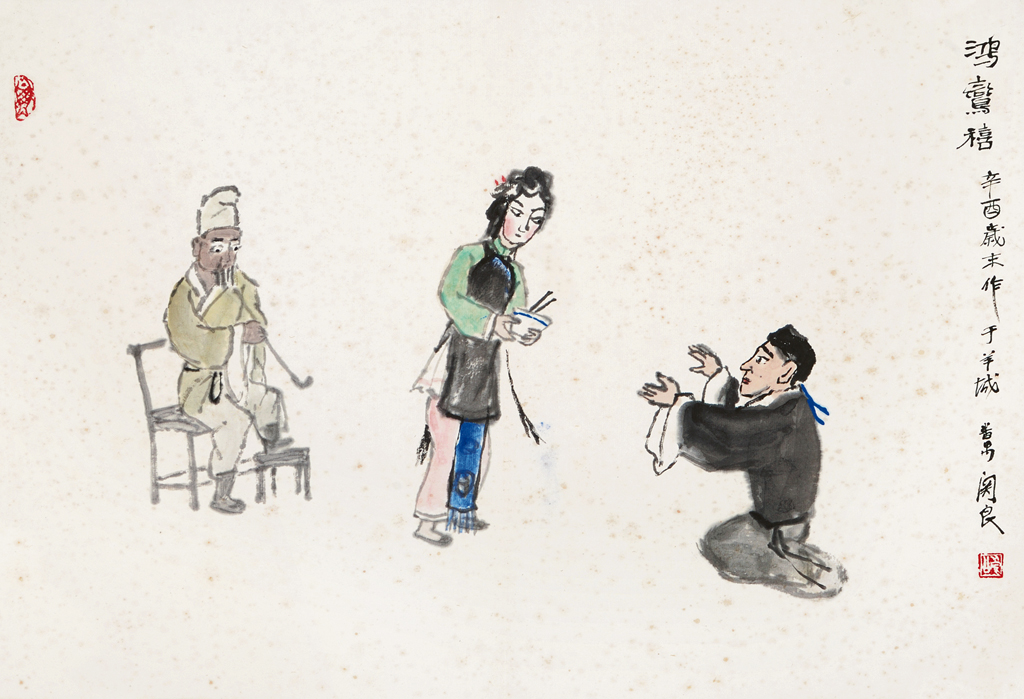
Highlights
Artist introduction
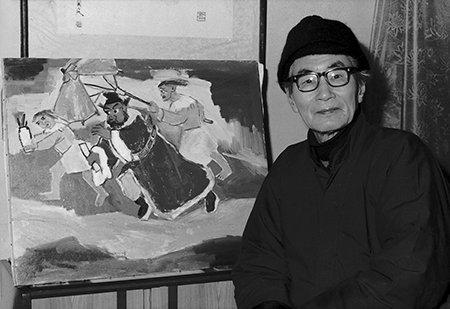
Born in Fanyu, Guangdong Province, Guan Liang, whose pseudonym was Liang Gong, went to Japan for study in 1917. He entered Kawabata Institute and then Pacific Art School for further education, during which he dedicated himself completely to the works of modern and contemporary European artists including Monet, Manet, Van Gogh, Matisse and Picasso. After returning home, Guan Liang taught in Shanghai Art College, Shanghai Art University and National College of Art in Hangzhou. Since 1949, he has served as the trustee of Chinese Artists Association, vice president of Shanghai Artists Association, a member of Shanghai Culture and History Museum, a painter and teacher in Chinese Painting Academy in Shanghai, a professor in Zhejiang Art Academy, director and adviser in Art Institute of Shanghai Jiao Tong University, as well as a committee member of Shanghai Literary Federation. Like the first batch of artists studying abroad at the early stage, Guan Liang started his learning with western paintings. He incorporated Gauguin’s exaggerated forms, Van Gogh’s large-scale contrast colors and Matisse’s uncomplicated lines into his own works, establishing a distinctive style embodying the feature of the times. Influenced by Wu Changshuo, Qi Baishi, Huang Binhong, Liu Haisu, and Pan Tianshou, and inspired by Zhu Da (whose pseudonym was Badashanren), Guan Liang brought about a unique style integrating Chinese and Western painting techniques and conveying the spirit of Chinese art, which ushered a new era of painting expression. As Cheng Shifa (a master of Chinese traditional paintings) said, Mr. Guan Liang is an indispensable master in the contemporary Chinese painting community. It is Guan Liang who introduced the painting conceptions of Western modernist into Chinese ink painting, creating an ingenious style of Chinese opera figures painting.
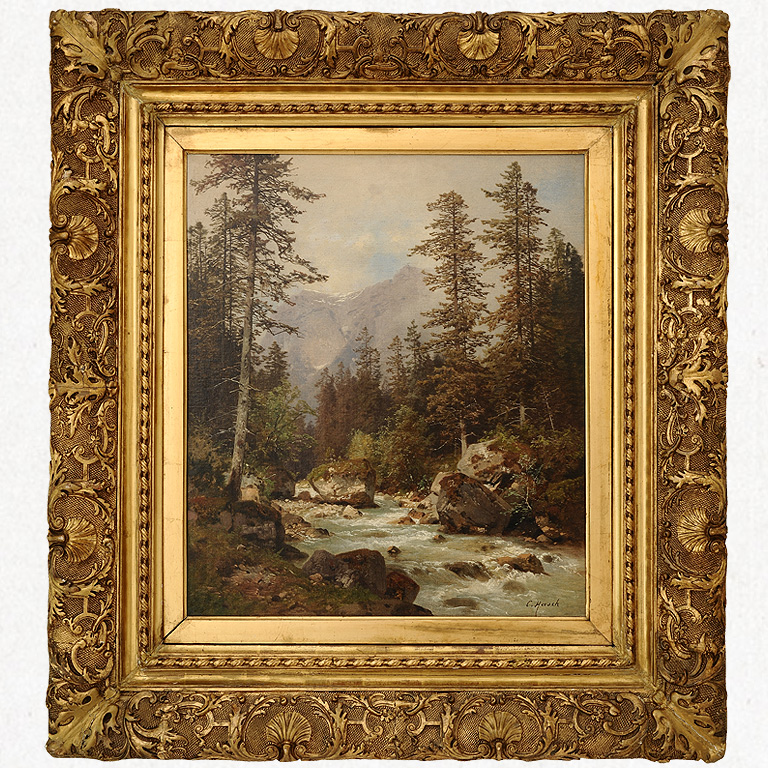
Introduction
THE OTHER MASTERS Appreciation of the 19th Century European Classical Realistic Oil Paintings
If we look back upon the western art history, we will see that European realistic painting is its most important part. From ancient Greece to the Renaissance and to the Industrial Revolution period in the 19th century, the techniques, works and ideas of realistic painting reached its apex. Great masters of oil painting and some minor masters of such different schools and styles as pre-Raphaelitism, neo-classicism, romanticism, realism and the Barbizon School all demonstrated their outstanding artistic talents and pushed classical realistic painting to perfection.
The exhibition falls into two categories of “Portraits and Genre School Paintings” and “Landscapes and Still Lifes” according to traditional classification in western history of fine arts.Apart from consideration of historical periods and geographical locations, it also includes criteria such as the styles of the artists, the techniques employed and the feelings attached to the works. All these works are realistic ones, with the characteristics of real scenes, truthful textural expression, exquisite detail and high summary in the tableau. And these works almost cover the whole spectrum of important schools of that time: pre-Raphaelitism permeated with a strong sense of literature and narration, German romanticism with its mysticism and profundity, French neo-classicism with its modesty and elegance, realism with its praise of nature and labor, and the French Barbizon School with its sense of on-site painting from life are all presented before us.
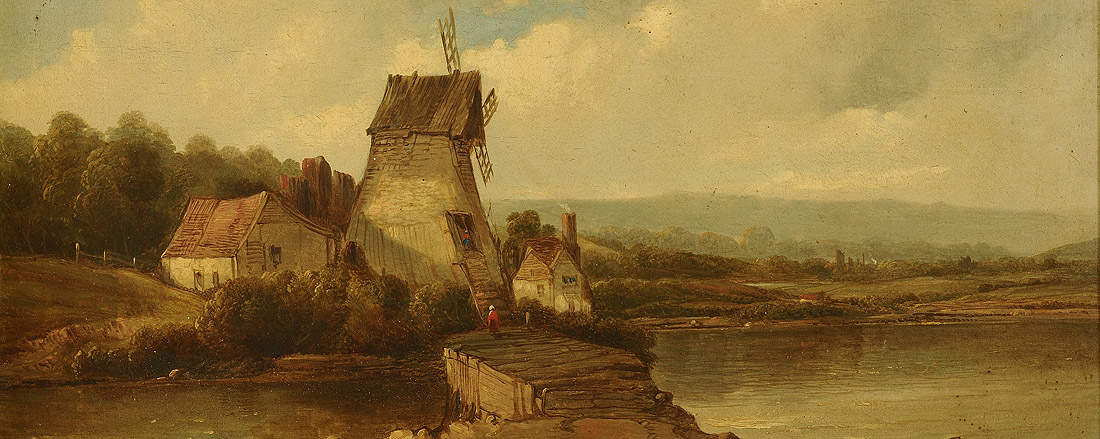
Highlights
- The Poison of Love

- Teenage Girl with a Straw Hat

- Playing with a Caged Bird
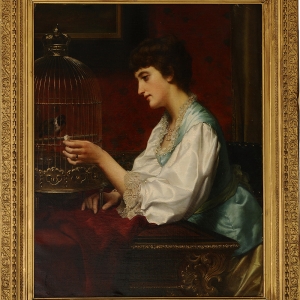
- Portrait of a French Woman
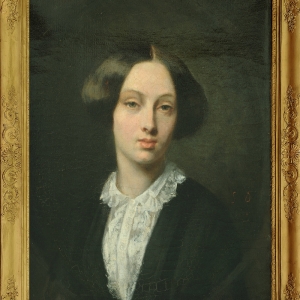
- Snow Scene at Dusk
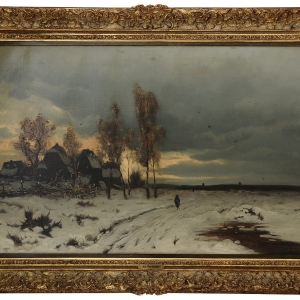
- Childhood Intimacy

- Path in the Woods
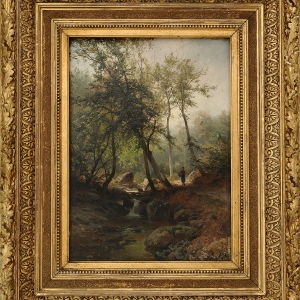
- Vagrant Fiddler

- Old Man Absorbed in Reading
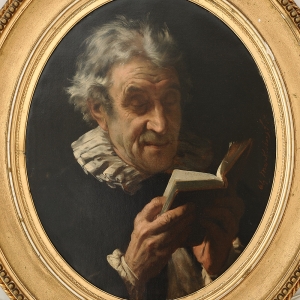
- Girl at Pray

- Hunting in the Forest
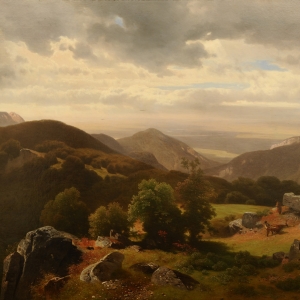
- Forest in Early SpringSee More
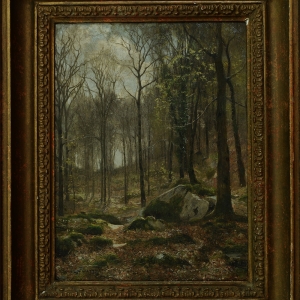
Visiting guide
Organizers: The Hunan Musuem, the Vienna Art Salon in Austria, See-Yon Exquisites
Time: June 6, 2015—June 28, 2015
Venue: Hunan Tan Guobin Contemporary Art Museum, Changsha, Hunan

Introduction
食洋而化 风神独韵——关良一百一十五周年诞辰特展
提起关良,浮现在众人眼前的都是一幅幅小巧可人、充满童趣、率真的戏曲人物画。这既是关良的独特标识,又是迥然于他人的风格特色。本次画展便展出了“孙悟空三打白骨精”、“贵妃醉酒”、“京戏人物组图”等极具中国特色的画作,吸引了大到七旬老人,小至几岁孩童的参观。
作为20世纪最具变革、创造精神的画家之一,关良在中国画的拓展与传承方面做出了卓越的贡献。他将中西方画法完美融合,将西方现当代派艺术家马蒂斯、凡•高、高更的画法融化,参以中国绘画中浓淡干湿的墨色,简练的线条,独有的中国美学精神,形成了个人绘画的特色。
他的作品用笔简练,质朴平易,极富笔趣,不拘泥对象的解剖、透视和比例,而是以夸张、变形的手法传神写照,人物情态天真而幽默,尤其是眼神刻画最见功力,眼睛瞳孔以浓墨点醒的绘画方式极具传神。

Highlights
Artist introduction

关良(1900-1986),号良公,广东番禺人。1917年留学日本,先后入川端研究所、太平洋美术学校学习,在日本期间潜心研究学习欧洲现当代艺术家莫奈、马奈、梵高、马蒂斯、毕加索的作品,回国后,于上海美术专科学校、上海艺术大学、杭州国立艺术专科学校任教。建国后,先后担任中国美术家协会理事、上海美术家协会副主席、上海文史馆馆员,上海中国画院画师,浙江美术学院教授、上海交通大学艺术研究室主任兼顾问及上海文联委员会等职。关良与早期第一批留学国外的艺术家一样,以西画入手,将高更、凡•高、马蒂斯的艺术中夸张的造型,平涂的大面积对比色,简练的线条融入自己的作品中,在早期的作品中留下了鲜明的时代特色。回国后在吴昌硕、齐白石、黄宾虹、刘海粟、潘天寿的影响下开始学习中国画,并上溯八大山人,最终形成了以中国艺术精神为旨归,融合中西技艺的独特的风格特色,开启一个绘画表现的新时代。正如程十发所言:关良先生是中国近现代画坛上一位不可或缺的大师,也是他最早将西方现代派的绘画理念引入中国的水墨之中,创造了别具一格的戏剧人物画。







